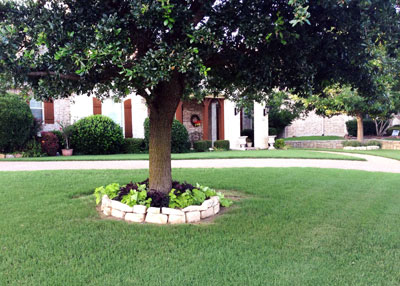Choose the Best Mowing Height
I took turf management classes as a part of my college curriculum in ornamental (landscape) horticulture. In fact, one of the nation’s most respected turf authorities sat on my Master’s Degree committee (by my choice).
I distinctly remember Dr. Richard Miller saying, “Tall grass becomes weak grass.” He was referring to southern warm-season grasses that do most of their growing in the late spring, summer and early fall. These are grasses that spread by producing runners, and runner production is severely limited when grass is allowed to grow too tall.

Is “mowing high” a good plan?
There are those that say that “mowing the grass high” will “insulate” it from winter’s cold or summer’s heat and drought, but turf authorities do not agree. Remember that phrase: If you let the grass grow too tall, it will weaken. More sunlight will hit the ground. Drying winds will blow through it. In the winter, cold will penetrate throughout.
So in our attempt to simplify horticulture, we suggest that you learn the recommended height for the type of grass that you’re growing, and then mow it at that height month-in and month-out. Exceptions are few and easily noted.
These are the recommended mowing heights…
• Common bermuda: 1-1/4 to 1-1/2 inch.
• St. Augustine: 2 to 2-1/2 inches.
• Dwarf hybrid bermudas, aka “Tifs”: 1/4- to 3/4-inch, depending on variety.
• Zoysias: 2 to 3 inches, depending on variety.
• Buffalograss: 3 to 4 inches.
• Fescue: 3 to 4 inches.
One time you might lower the mower…
“Scalping” is the process of dropping the mower one or maybe two notches so you can remove all weeds and browned winter stubble. It’s something you would do in mid-February in South Texas and into early March in North Texas. Bag and collect those clippings and use them in the compost pile. Do not send them to the landfill. They’re too valuable because of all the nutrients and organic matter they contain. Remember that scalping is primarily an aesthetic practice. It is not required. But if you do scalp the lawn, wear quality goggles and a very good respirator.

One time you might want to raise the mower…
If you mow your bermuda lawn regularly and you notice in June or early July that the grass is brown for two or three days after each mowing, it may be that you’re cutting down into stem stubble. If you’re certain that you’re not mowing too high already, you could raise the mower one notch so that only leaf blades would be cut. But you must mark the calendar to drop the mower back down that same amount when you scalp the grass in late winter.
Note to folks who use someone else to mow…
It is extremely likely that a mowing crew sets their mowing height at the beginning of the season and never changes it thereafter. Watch to see if they’re using the recommended height. If not, don’t be afraid to ask them to change. It should be a simple procedure.
Check, too, that they’re not bringing weed seeds or diseases in as they mow. It’s not especially likely, but back in the 60’s and 70’s, St. Augustine decline virus was spread rapidly all across Texas in exactly this way. Luckily, newer St. Augustine varieties are not susceptible, but I felt like it was worthy of note.
